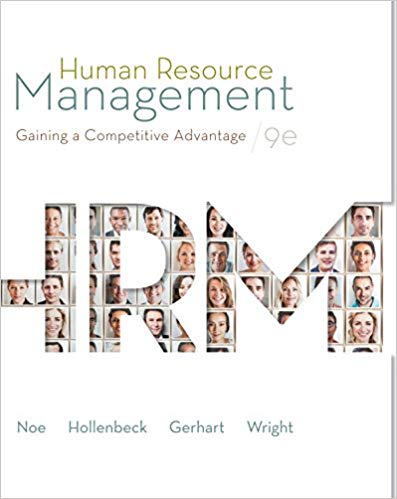Test Bank Human Resource Management 5Th Canadian Edition By Sandra Steen
Digital item No Waiting Time Instant Download
In Stock
Original price was: $55.00.$20.00Current price is: $20.00.
Test Bank Human Resource Management 5Th Canadian Edition By Sandra Steen
Chapter 04
Planning for and Recruiting Human Resources
True / False Questions
1. The sole purpose of workforce planning is to identify the number of employees the organization will need to meet its objectives. FALSE
Accessibility: Keyboard NavigationBlooms: UnderstandDifficulty: MediumLearning Objective: 04-01 Discuss how to align workforce planning with the organization’s strategy; forecast labour demand and supply; and determine labour surplus or shortage.Topic: 04-02 Introduction
2. The first step in the workforce planning process is forecasting. TRUE
Accessibility: Keyboard NavigationBlooms: RememberDifficulty: EasyLearning Objective: 04-01 Discuss how to align workforce planning with the organization’s strategy; forecast labour demand and supply; and determine labour surplus or shortage.Topic: 04-03 Workforce Planning—Why What & How?
3. Trend analysis is the most basic forecasting method used by organizations. FALSE
Accessibility: Keyboard NavigationBlooms: UnderstandDifficulty: MediumLearning Objective: 04-01 Discuss how to align workforce planning with the organization’s strategy; forecast labour demand and supply; and determine labour surplus or shortage.Topic: 04-04 Forecasting
4. Statistical planning models are useful for workforce planning when there is a long, stable history that can be used to reliably detect relationships among variables. TRUE
Accessibility: Keyboard NavigationBlooms: RememberDifficulty: EasyLearning Objective: 04-01 Discuss how to align workforce planning with the organization’s strategy; forecast labour demand and supply; and determine labour surplus or shortage.Topic: 04-04 Forecasting
5. A transitional matrix is a statistical procedure requiring no human judgement that is used to forecast labour supply. FALSE
Accessibility: Keyboard NavigationBlooms: AnalyzeDifficulty: HardLearning Objective: 04-01 Discuss how to align workforce planning with the organization’s strategy; forecast labour demand and supply; and determine labour surplus or shortage.Topic: 04-04 Forecasting
6. HR planners need to consider only the internal labour supply within organizations. FALSE
Accessibility: Keyboard NavigationBlooms: ApplyDifficulty: MediumLearning Objective: 04-01 Discuss how to align workforce planning with the organization’s strategy; forecast labour demand and supply; and determine labour surplus or shortage.Topic: 04-03 Workforce Planning—Why What & How?
7. Very few strategies are available for dealing with projected shortages and surpluses of labour. FALSE
Accessibility: Keyboard NavigationBlooms: UnderstandDifficulty: MediumLearning Objective: 04-02 Examine methods organizations use to deal with a labour surplus and shortage.Topic: 04-05 Goal Setting and Strategic Planning
8. Organizations are most likely to benefit from hiring and retaining employees who provide competency to the organization. TRUE
Accessibility: Keyboard NavigationBlooms: UnderstandDifficulty: MediumLearning Objective: 04-02 Examine methods organizations use to deal with a labour surplus and shortage.Topic: 04-05 Goal Setting and Strategic Planning
9. As an option for avoiding an expected labour shortage, the use of new external hires is very fast but is low in terms of ability to change later. FALSE
Accessibility: Keyboard NavigationBlooms: RememberDifficulty: EasyLearning Objective: 04-02 Examine methods organizations use to deal with a labour surplus and shortage.Topic: 04-05 Goal Setting and Strategic Planning
10. The primary reason organizations engage in downsizing is to promote future competitiveness. TRUE
Accessibility: Keyboard NavigationBlooms: UnderstandDifficulty: MediumLearning Objective: 04-02 Examine methods organizations use to deal with a labour surplus and shortage.Topic: 04-05 Goal Setting and Strategic Planning


Reviews
There are no reviews yet.